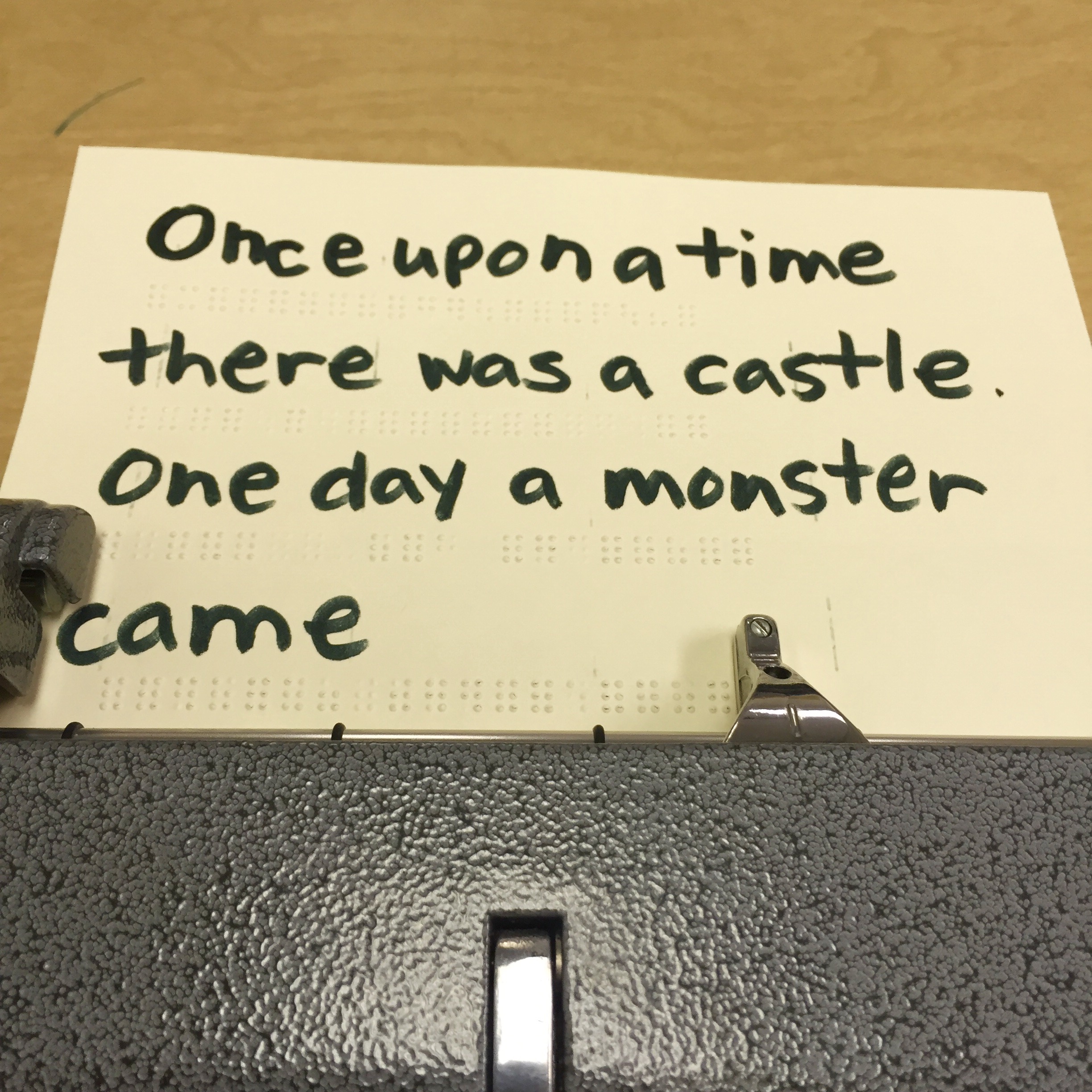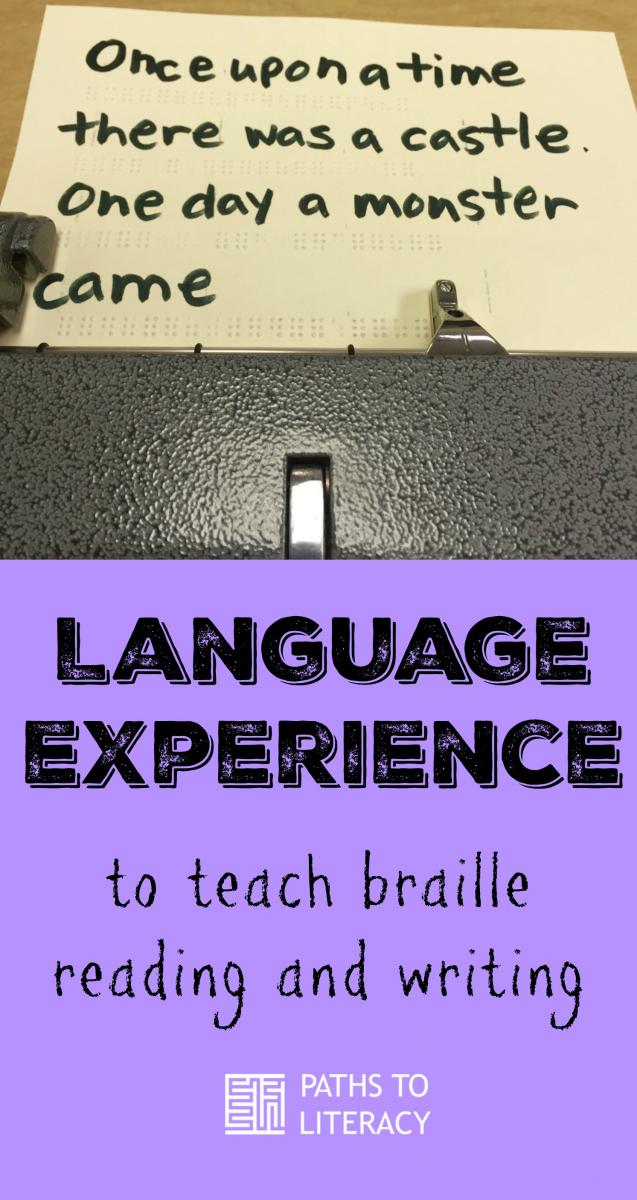Braille is Reading and Writing: Language Experience

Background
This strategy is an activity from a “language experience” approach. The student here is 4 years old. She has low vision and is an English language learner. She also has a hearing impairment. She is a dual-media learner. Braille has recently been added to her goals because of instability in her vision and functional need for very large print size. She is just being introduced to braille. I am not focused on her ability to accurately complete the mechanics of braille reading or writing, I just want her to experience that braille is reading and writing and it is fun!
Student
Pre-K student or older who is dual-media learner. Easy to adapt to different learners.
Objective
Student participates in written story telling and will experience that a braille writer makes braille and braille is a way to write your words on paper
Benefits of language experience…
- It brings together writing, reading, art, and language.
- It extends the learners' creativity in storytelling through writing.
- It helps learners understand that what they think and say can be written.
- It is learner-centered and demonstrates that the learners' thoughts and language are valued.
- It provides reading material that is predictable and readable because it uses the learners' natural language.[1]
Audio track of activity
Transcript of audio track:
- Braille writer and paper
- Props or pictures for story telling ideas (dramatic play)
- Dark marker if print will be used
- Crayons or markers if pictures will be drawn or materials to add tactile pictures
- Introduce activity – write a story. Bring in objects or pictures and model story starters. Gauge what may be needed based upon how much support your student may need. In this case we had a plush toy guide dog we named Princess and the student took off from there.
- Have the student put paper in the Brailler at the level they are able and/or model the process verbalizing the steps clearly and having student watch and feel along with what you are doing.
- The student dictates a story while pushing the brailler keys. This student does not know how to form letters yet so she presses keys randomly. I am calling this “invented braille.” Student is at a “Precommunicative stage”[1] of writing in braille – student does not have knowledge of how arrangement of braille dots relate to letter sounds.
- Remove paper and have student dictate story again while you interline it. If vision allows, write so she can observe you writing as she hears you sounding out the words.
- Draw pictures or decorate story.
- Have student retell story again while looking at words or running fingers across braille or you can model braille reading by reading her braille with your fingers while reading story out loud.
Notes
The student's story was not exactly the same when she told it while she brailled and when she dictated it to me while I interlined it. That's just fine as the goal was simply a positive experince that braille is a way to read and write. She is practicing the conventions of story telling.
The student's complete story (in case you were wondering what happened with the monster)
Once upon a time there was a castle. One day a monster came. And then Mickey came to the castle. One day they said go away monster.
The End
- This activity is really a framework more than a set of specific instructions. A language experience and literacy activity can be incorporated into the student's play or storytelling using the student's natural language. Braille, print, tactile symbols or objects can be used to tell and retell stories that are student generated. Science observations or O&M experiences can be documented in student's words in braille and/or print or using technology or communication systems. These stories can be retold giving the student a feeling of mastery of "reading." After students understand that print or braille represents our words but before they can decode words or even know all their letter names and sounds, students approximate reading by looking at written words (feeling braille) and telling memorized stories and rhymes. Pictures, objects, tactiles or sounds can provide context as student follows sequence of story.
- If you have a recording device that could go back and forth between home, student could play the recording of the story while sharing the braille and/or print with family.
- For students who need supports for speech, a tech option like using an iPad to voice the story can be explored, student could switpe through or use a switch to tell story


Comments
Love this Post!!
Thanks for taking the time to